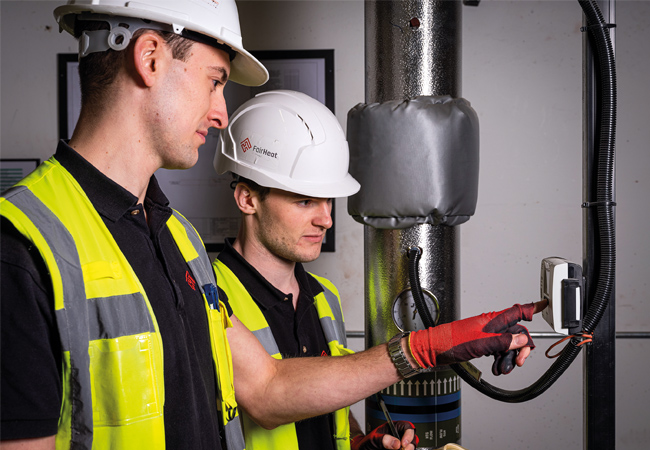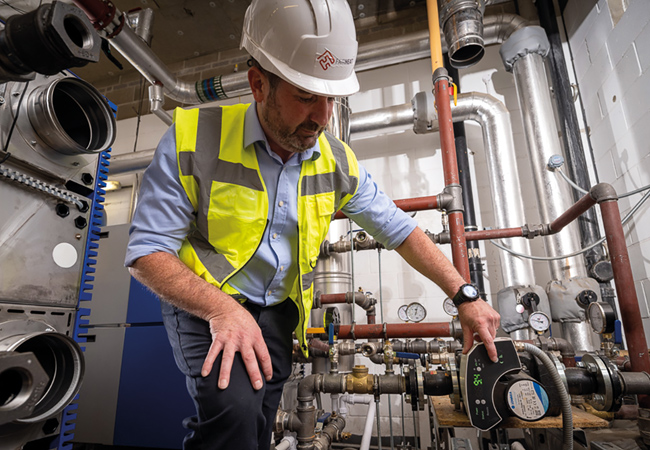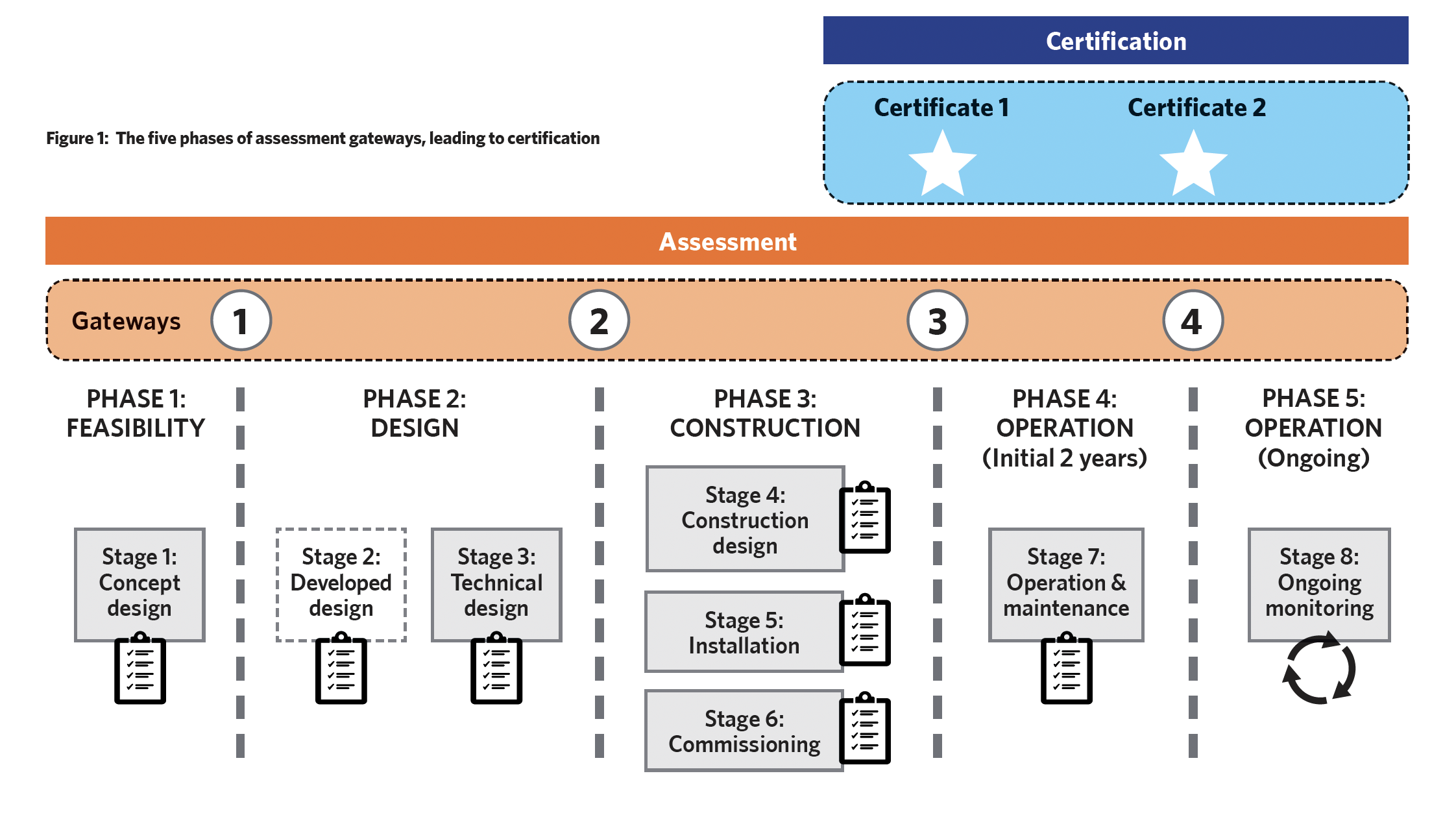
Huge changes are coming to the UK heat network sector, with regulation due in 2025. Heat networks will be a regulated utility, similar to gas and electricity, with Ofgem as the regulator, minimum technical standards, consumer protection, and heat network zoning. The scale and pace of change cannot be overemphasised.
Regulations will require minimum technical standards, under a Heat Network Technical Assurance Scheme (HNTAS), for all new-build heat networks from 2025, including the 50,000 residential connections already happening each year. This could rise to 100,000 heat interface units being installed annually in the foreseeable future, partially driven by the regulations themselves.
All 14,000 existing (legacy) heat networks will also be covered, including the 500,000 residential customers currently supplied by heat networks. However, the number of networks is probably a significant underestimate, and improved data could easily indicate there are more like 18,000 legacy networks.
Both communal and district heat networks will be included in the regulations, with the majority of legacy networks being relatively small, communal (single block) networks. The regulations will recognise that many of these communal systems are old and not in the best state of repair, often resulting in poor performance and customer outcomes.
HNTAS is addressing how we can bring these up to a reasonable performance standard over a reasonable period of time. The technical standards will be outcomes-based, so networks will need to meet key performance indicators (KPIs) to gain Heat Network Certification.
For the past 18 months, the Department for Energy Security and Net Zero (DESNZ) has been developing HNTAS, building on CP1 (2020). The work has been led by technical author FairHeat, in partnership with Gemserv, which is focusing on procedural aspects of the assurance scheme.

HNTAS is proposing that a single ‘responsible person’ be accountable for each heat network
Normative documents have now been developed, setting out the necessary governance, structures, procedures and technical standards required to ensure a minimum level of performance and reliability for heat networks.
HNTAS core principles are that the scheme will be outcomes-orientated, preventative, proportionate, deliverable, adaptable, and enforceable. See ‘Assuring quality of heat networks’, CIBSE Journal, May 2023.
The technical normative documents set out clear and measurable KPIs (technical minimum requirements) to be met for each element of a network, plus the evidence required and depth of assessment, along with ‘key failures’ that need to be avoided.
Draft normative documents have been developed in collaboration with sector stakeholders through an extensive series of technical sub-working groups. This involved 25 technical sub-workshops, bringing together 69 stakeholders from 44 diverse organisations, including manufacturers, housing associations, local authorities, consultancies, developers, contractors, energy service companies, trade associations, and professional bodies. This industry engagement will continue with a HNTAS consultation in the summer.
Heat network operators will be required to submit a Heat Network Improvement Plan, setting out how they will achieve certification within a set period following the installation of metering
HNTAS’s proposed approach is to certify individual heat networks. Our work-in-progress model is shown in Figure 1. It combines a series of assessment gateways (orange) that, ultimately, lead to certification (blue). Most of the detailed technical assessment work, carried out by registered and trained assessors, will take place across the orange stages, with the clipboards showing assessment points, and the dotted lines as gateways to proceed to the next stage.
The normative documents set out the detailed minimum requirements at each assessment through design, construction and commissioning. These design/construct/commissioning gateways aim to ensure the network is likely to meet future operational performance targets and gain full certification. There is a clear requirement to have binary yes/no decisions, with certification (authorisation to supply heat to customers) awarded to networks that meet minimum technical requirements. By requiring responsible persons to demonstrate that their heat network performance meets KPI thresholds, before allowing a network to pass through each assessment gateway, the scheme is ‘preventative’ and ‘outcomes-based’ (two of the core principles of HNTAS).

This approach aims to ensure that the great majority of heat networks pass at the point of certification, and that key failures in the market are avoided. There are 28 KPIs, categorised into six categories, that set a framework for measuring and monitoring heat network performance. The six categories are: energy centre; district distribution network; thermal substation; communal distribution network; consumer connection; and consumer heat system.
Existing legacy networks will, inevitably, find it harder to meet the HNTAS minimum standards than new networks. So, HNTAS is taking a pragmatic transitionary approach to bring legacy networks as close to full standard as possible, as soon as possible. HNTAS will set out a transition period, during which improvement plans will need to be submitted and minimum levels of metering will need to be installed. Once metering is in place, networks will be in a position to evidence-measure performance accurately and move to full certification.
Fixing legacy networks
For legacy networks, HNTAS aims to ensure the market is able to comply and that the very worst-performing networks are addressed early. To achieve a steady improvement in performance over time, the goal is for every network to be fully certified to a minimum level of performance by a set future date. The proposal for legacy networks is a two-stage transitional approach, which will require minimum levels of metering and monitoring to be installed, followed by the need to report performance, with a minimum threshold that all heat networks must meet within a set period.
Operators will be required to submit a Heat Network Improvement Plan, setting out how they will achieve certification within a set period following the installation of metering, and will need to prove in-use performance after two years of operation, based on real data. It is proposed that networks installed before 2015 will be allowed more relaxed targets than those installed post-2015, when the Heat Networks (Metering and Billing) Regulations came into force.
HNTAS is proposing that a single ‘responsible person’ – such as the owner or developer – be accountable for each heat network. Duty holders of the designated designer, contractor and heat network operator are accountable to the overall responsible person for the day-to-day running of each project stage. This designation of duty-holder responsibilities is similar to the requirements in the Building Safety Act.
Design, construction and commissioning gateways aim to ensure the network is likely to meet future operational performance targets and gain full certification
The project team is keen to ensure that this is a deliverable scheme, which is proportionate and does not place too much burden or cost on heat network operators or consumers.
During the operational stage, if the network achieves HNTAS minimum performance standards it moves into a stage where the heat network operator regularly submits data to the HNTAS portal (currently being developed), to show that it is still meeting the HNTAS KPIs.
More detailed assessments are only triggered where it falls outside the KPIs. Essentially, this allows a level of ongoing self-assessment for networks that meet minimum performance levels.
Evidence and data requirements will form a ‘golden thread’ throughout all stages of a network’s life, requiring submission of data into the HNTAS and Ofgem digital platforms. It is hoped much of this data submission will be automated, to minimise time and cost.
It is clear that significant change is coming in 2025 as the sector transitions to a regulated heat network market, and setting minimum technical standards is a key part of this. Assessing and certifying heat networks that meet the minimum standards will raise sector performance.
HNTAS is moving into a pilot phase across 2024, to test that it works in practice on real networks, before final implementation in 2025. Engagement with stakeholders throughout this process will continue, as this is key to achieving sector buy-in for the assurance scheme.
There are significant benefits and opportunities that will come from HNTAS: a commercial market for trained and registered assessor services; a general improvement in heat network performance, with consumers seeing improved reliability and service levels; social landlords and local authorities being able to provide more affordable heat; and investors viewing networks as more investable.
There is still a great deal to do to develop heat network regulations, through consultations and secondary legislation. DESNZ aims to publish the HNTAS normative documents in some form this year. HNTAS piloting will take place throughout the year, and DESNZ is seeking heat network operators and assessors that would like to take part. Plans to update CIBSE CP1 are also being put in place, to ensure alignment before regulations are implemented in 2025. A methodology to calculate the carbon content of heat should also be in place by that date.
Heat networks are complex and introducing regulation is not straightforward, so it is important to give this sector early sight of direction of travel. As such, this is a work in progress and does not represent government policy. A DESNZ HNTAS consultation this summer will continue sector engagement, and this work will put in place the missing piece of the heat network jigsaw, namely heat assurance.
In the zone
The other huge area of change the regulations will introduce is Heat Network Zoning, to designate geographic zones where heat networks are expected to be the lowest-cost solution to decarbonise heat. It is anticipated that multiple networks will be built in these zones, with the opportunity to connect these to create larger, city-wide networks.
Mandating building connection within zones will give developers ‘connection assurance’. Buildings mandated to connect may include: new buildings; large public-sector buildings; land-large, non-domestic buildings, such as office blocks or shopping centres; and domestic premises that are already communally heated – such as flats with a communal building-level heating system.
Nineteen English cities are currently in a pilot project to refine and test the proposed methodology. A recent DESNZ consultation on zoning shows the direction of travel.
For CIBSE’s response to the consultation, see here.
- Based on a paper presented at the 2024 CIBSE Technical Symposium www.cibse.org/symposium
About the authors:
Professor Phil Jones is an independent consultant working on the DESNZ HNTAS team; Gareth Jones is managing director of FairHeat, the HNTAS technical author





